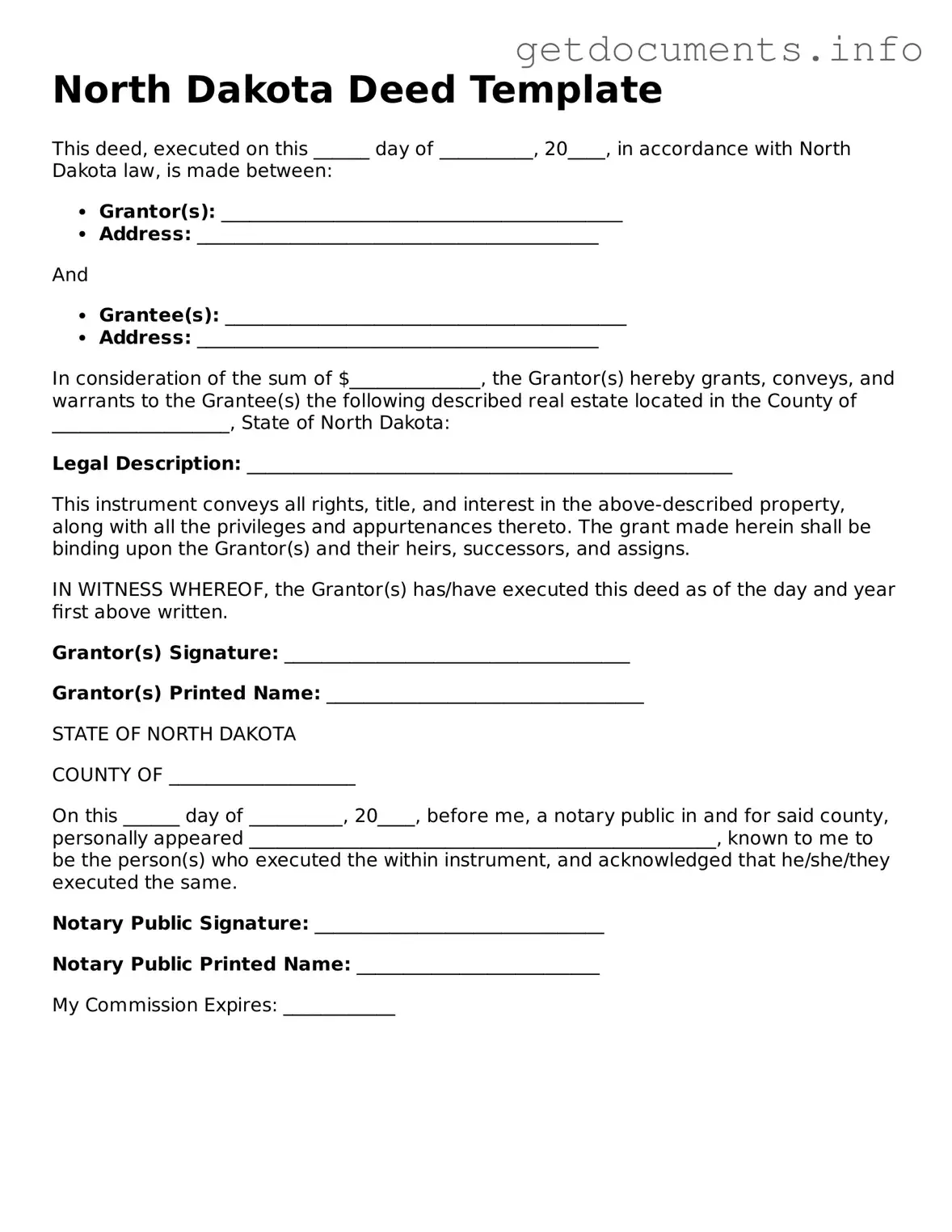The North Dakota Deed form serves as a crucial legal document in real estate transactions, facilitating the transfer of property ownership from one party to another. This form outlines essential details, including the names of the grantor (the seller) and grantee (the buyer), a clear description of the property being transferred, and the terms of the conveyance. It also requires the inclusion of the property's legal description, which ensures clarity and precision in identifying the exact boundaries of the land involved. Additionally, the form may contain information about any encumbrances, such as mortgages or liens, that could affect the property's title. Completing this deed accurately is vital, as it not only protects the rights of both parties but also ensures that the transaction is legally binding and enforceable. Understanding the components and requirements of the North Dakota Deed form is essential for anyone engaged in property transactions in the state, whether they are seasoned investors or first-time homebuyers.
